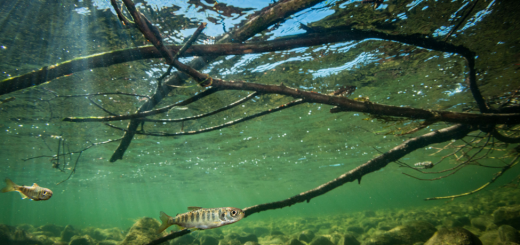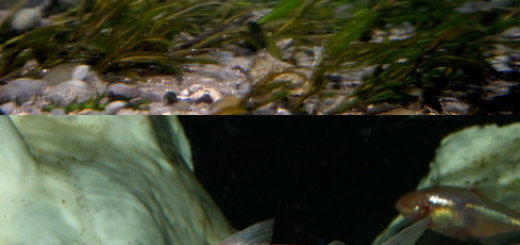Habitat preferences and movements of non-native rainbow trout
In many coldwater rivers and streams around the world, nonnative trout have altered the aquatic ecosystem. In the late 1800s, widespread trout stocking became commonplace and various trout species were introduced outside of their native ranges to improve sport fisheries. These species quickly became established and decimated native salmonid populations through competition, hybridization and predation. Trout introductions have also been tied to declines in amphibian populations and benthic macroinvertebarate communities, a common food source for stream fish.
Rainbow trout (Oncorhynchus mykiss; Figure 1) are native to the Pacific Rim from Mexico to the Russian Far East, but now inhabit waters on every continent except Antarctica due to their popularity with anglers. Rainbow trout can withstand warmer temperatures than many other species of salmonids and can adapt to a wide range of habitats. They often displace native salmonids by outcompeting them for food and habitat. Some populations of rainbow trout exhibit anadromy, spawning in the freshwater reaches of rivers but living their adult lives in the open ocean. These trout are commonly known as “steelheads” because of the silvery coloration they develop shortly after reaching saltwater (Figure 2).
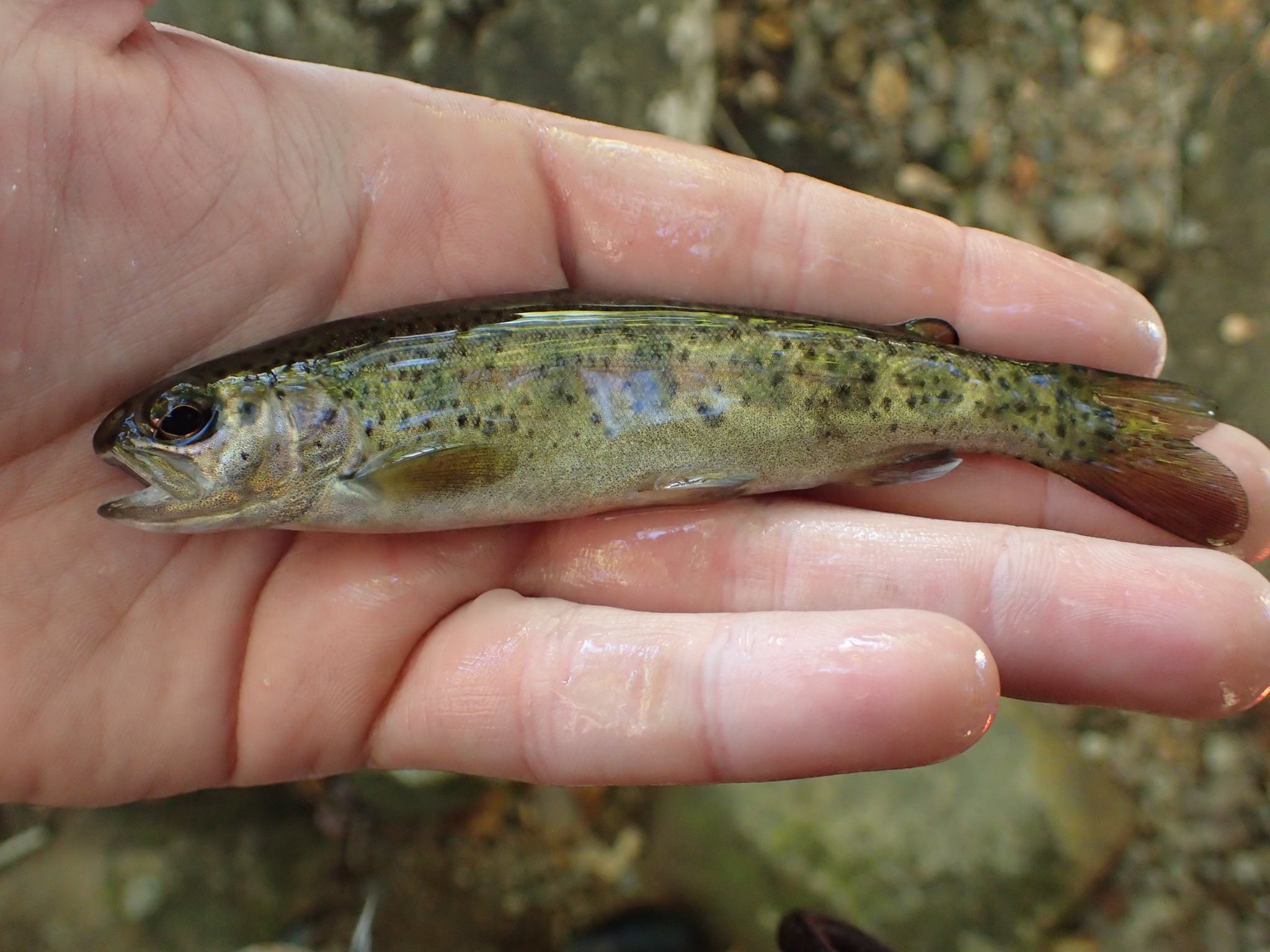
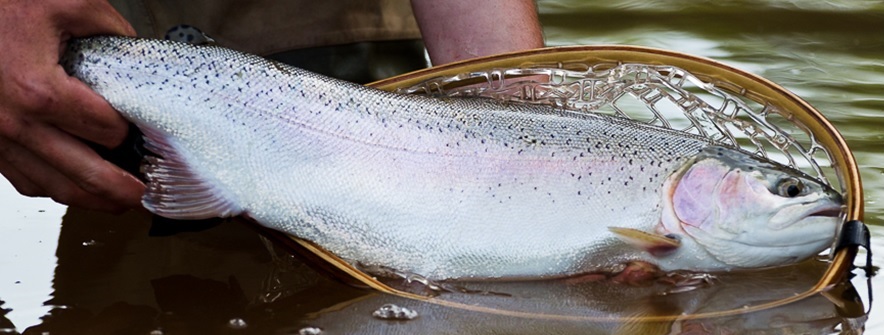
On Canada’s Prince Edward Island (PEI), Scott Roloson and Dr. Michael van den Heuvel from the Canadian Rivers Institute led a study to examine the spread of invasive rainbow trout. Rainbow trout were first introduced to PEI for angling in the early 1900s and quickly established self-sustaining populations in several rivers. The researchers also investigated habitat overlap between rainbow trout and native Atlantic salmon (Salmo salar; Figure 3) and brook trout (Salvelinus fontinalis; Figure 4) that could lead to competitive interactions. Brook trout are a common species in the rivers and streams on PEI, but Atlantic salmon have experienced dramatic declines in recent decades due to overfishing and habitat alterations from dams and increased agriculture. Atlantic salmon are anadromous, and the juveniles inhabit freshwater rivers before migrating to waters off the coast of western Greenland to feed on capelin (Mallotus villosus) and other small fish.
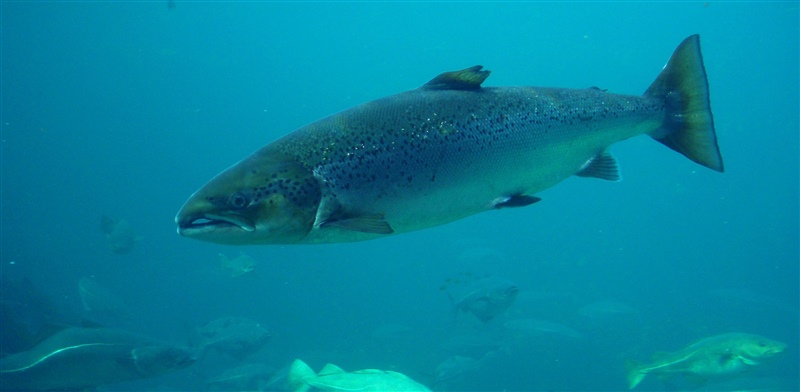
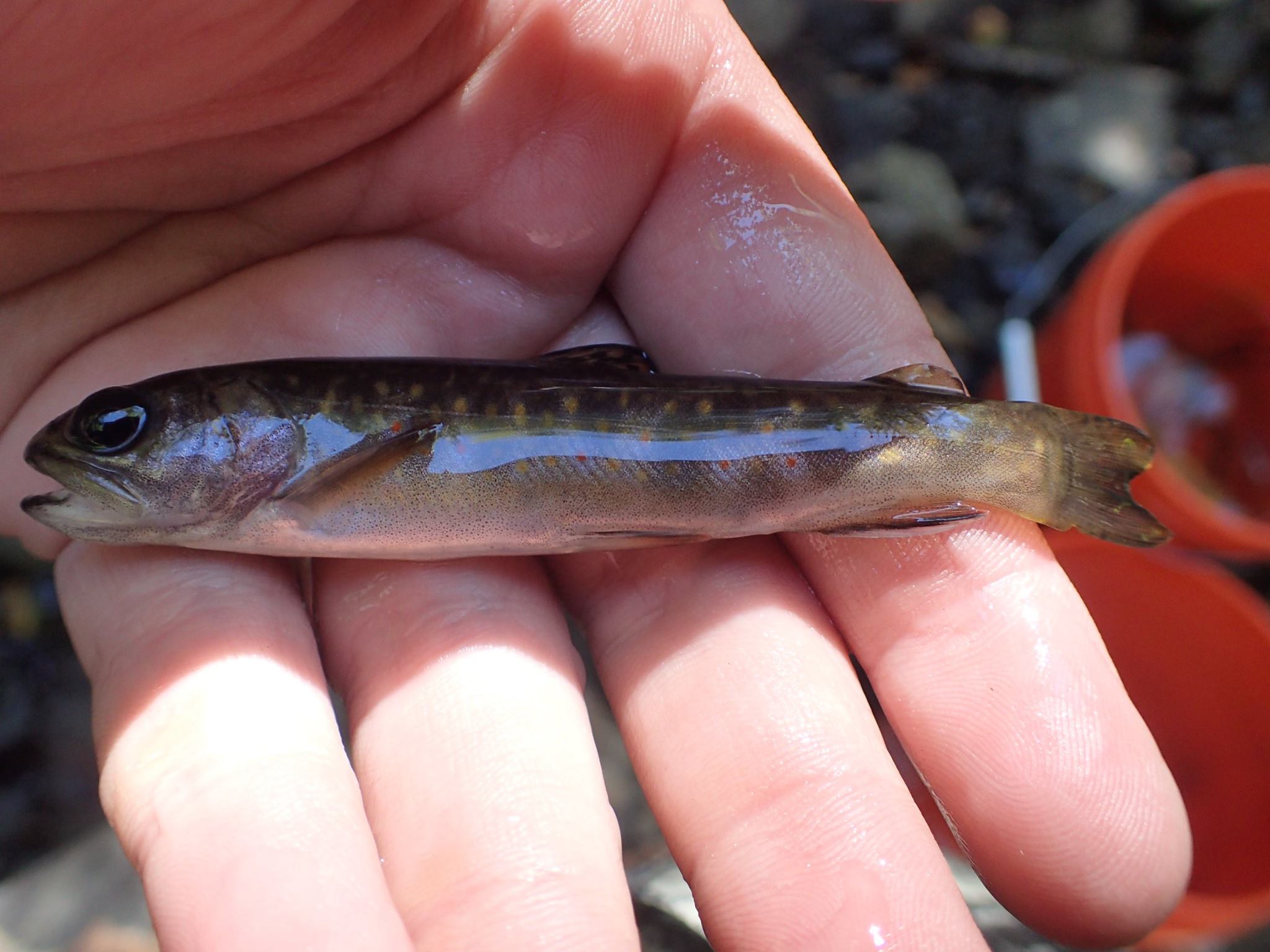
Three surveys were conducted as a part of this study. To examine rainbow trout distribution, a backpack electrofisher was used to detect trout in 37 rivers chosen based on recreational fishing reports, proximity to rivers with known rainbow trout populations and records of past stocking efforts. A landscape survey was conducted in 26 watersheds, 14 where rainbow trout were established and 12 where rainbow trout have not been detected, to document the slope of the terrain and the surrounding land use to determine the susceptibility of watersheds to rainbow trout invasion. Finally, surveys were conducted using a backpack electrofisher to examine the fish communities in the rivers. At each site, the rivers were assessed by examining the slope, water discharge and size of the substrate particles.
The results suggest that the three species of salmonids are largely separated by their habitat preferences. Brook trout preferred smaller headwater streams with finer sediments. The juvenile Atlantic salmon utilized wider reaches of the river with abundant amounts of cobble as nursery habitat. Rainbow trout were typically found in high gradient rivers with fast moving water and steep slopes. Rainbow trout were also the most abundant salmonid found in rivers surrounded by agricultural land.
The researchers found that watersheds that had recently been invaded by rainbow trout were in close proximity to rivers with established populations. This led to another study that examined their movements to identify migratory patterns. Three watersheds were chosen with varying degrees of agricultural activity: Dunk River, the Montague–Valleyfield–Brudenell River Complex, and West River.
Three different approaches were used in this study. Rainbow trout were captured in the Montague River and tagged with red Floy T-Bar anchor tags (Figure 5). Recreational anglers in the area were rewarded if they captured a tagged trout and reported the location. Another approach was to tag rainbow trout with acoustic tags. Between 2011 and 2014, a total of 62 rainbow trout were implanted with acoustic tags between the three watersheds (Figure 6). These trout were also tagged with yellow Floy tags so anglers could report the locations if any were captured. Acoustic receivers were placed throughout the rivers and estuaries to track the movements of the trout.

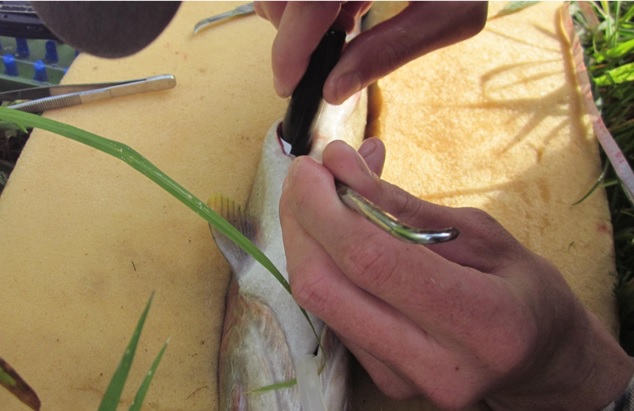
Lastly, otolith microchemistry was used to examine if the trout entered saltwater or remained in freshwater. Otoliths are calcium carbonate structures that aid the fish in hearing and balance. By examining the ratio of strontium to calcium (Sr:Ca) and barium to calcium (Ba:Ca) in the otoliths, it can be determined if the trout remained in freshwater, migrated to the tidal reaches of the river or spent a period of time in estuarine or marine waters. These chemical signatures differ between water bodies: Sr:Ca increases with increasing salinity but Ba:Ca is higher at low and intermediate salinities. These ratios can also be assessed from the core of the otolith to determine if the trout’s mother was anadromous or a freshwater resident.
It was found that a cohort of rainbow trout in all three river systems underwent short migrations into tidal reaches of the river and the estuary. This may be advantageous as migratory trout were found to grow larger than the trout that remained in freshwater. While most remained in their watersheds, 6% of the trout tagged with acoustic tags left their river or estuary indicating that it is possible that rainbow trout could colonize nearby rivers. It was also revealed that the young of migratory females were more likely to become migratory themselves though some migratory trout did arise from females that remained in freshwater.
Although they are popular with anglers, rainbow trout have negatively influenced the aquatic ecosystems where they have been introduced to. Rainbow trout prefer high gradient streams, but some nonnative populations may undergo short migrations into estuaries or even the ocean. This migratory behavior can potentially lead to rainbow trout spreading into nearby rivers. These findings have important implications for managing populations of invasive rainbow trout.
References:
Roloson, S.D., K.M. Knysh, M.R.S. Coffin, K.L. Gormley, C.C. Pater, and M.R. van den Heuvel. 2018. Rainbow trout (Oncorhynchus mykiss) habitat overlap with wild Atlantic salmon (Salmo salar) and brook trout (Salvelinus fontinalis) in natural streams: Do habitat and landscape factors override competitive interactions? Canadian Journal of Fisheries and Aquatic Sciences 75(11): 1949-1959.
Roloson, S.D., S.J. Landsman, R. Tana, B.J. Hicks, J.W. Carr, F. Whoriskey, and M.R. van den Heuvel. 2020. Otolith microchemistry and acoustic telemetry reveal anadromy in non-native rainbow trout (Oncorhynchus mykiss) in Prince Edward Island, Canada. Canadian Journal of Fisheries and Aquatic Sciences 77(7): 1117-1130.

